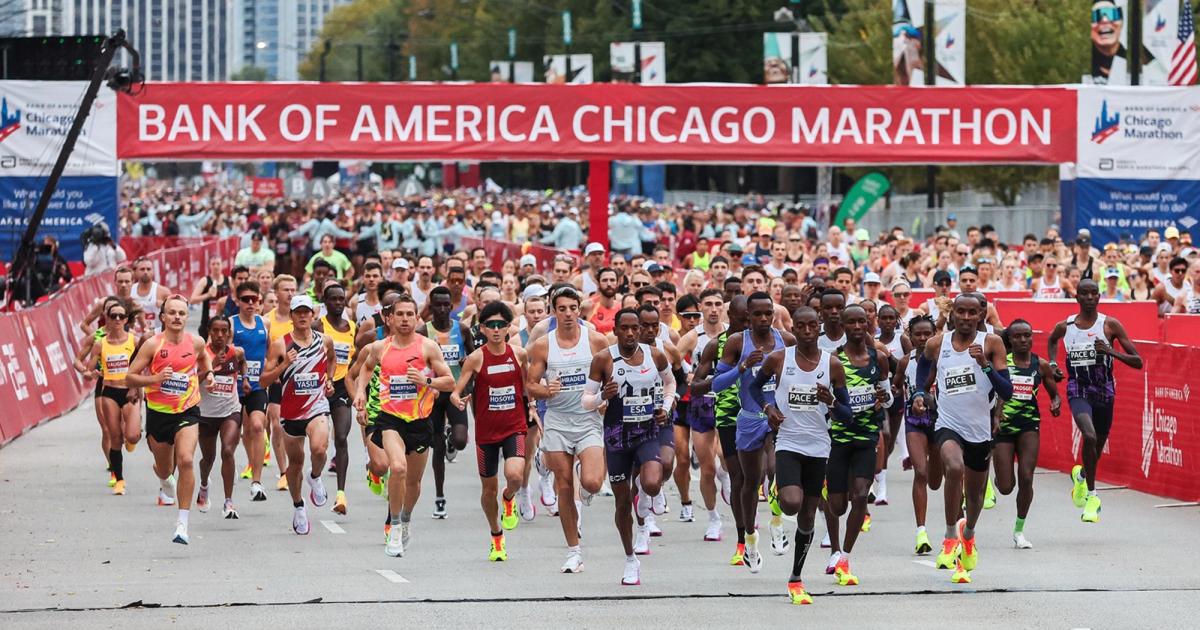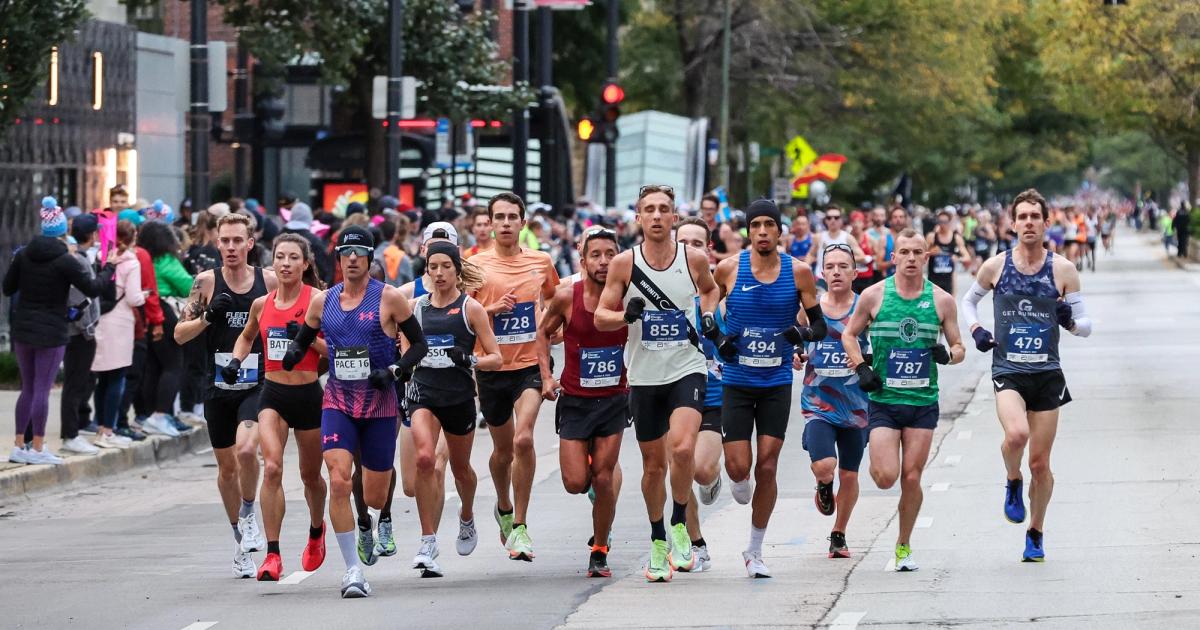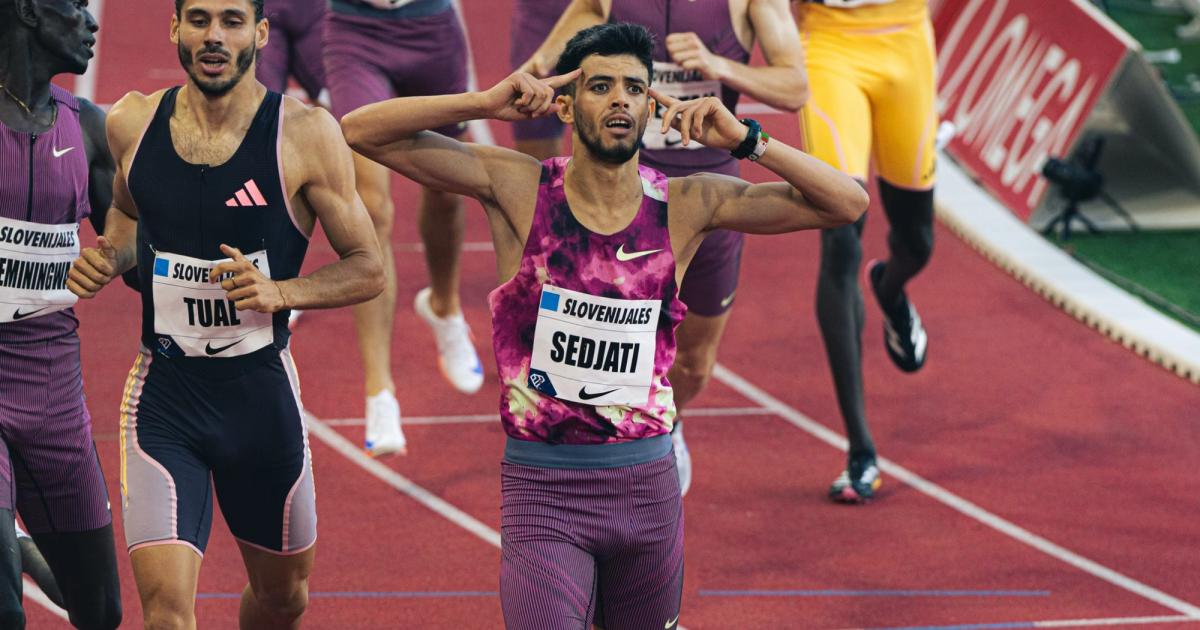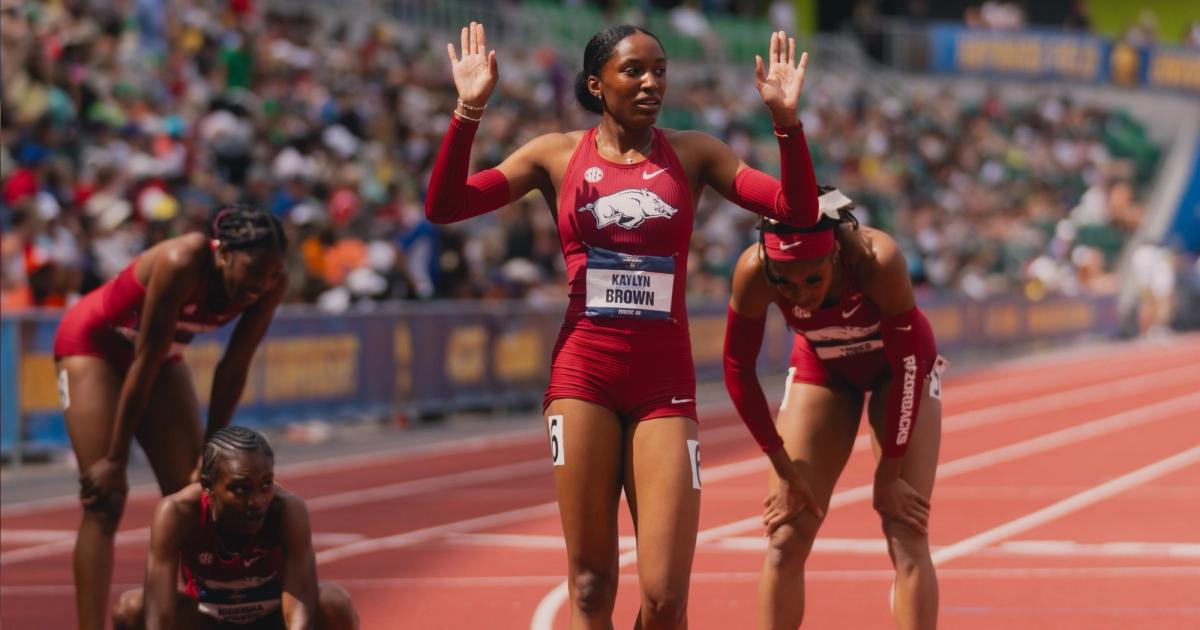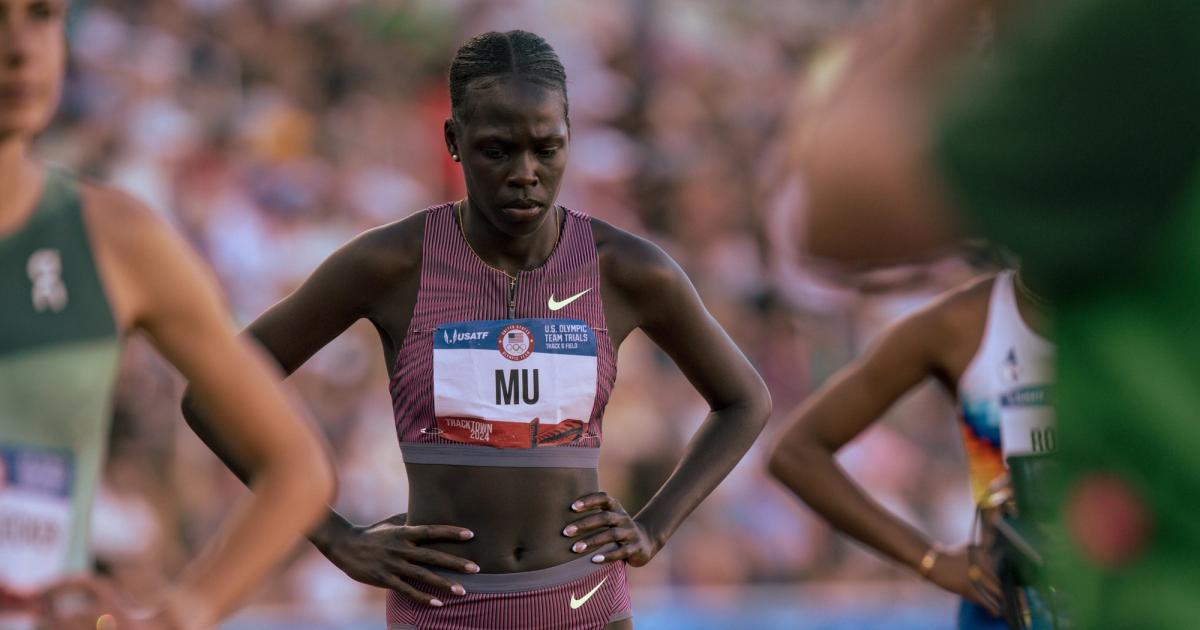By Rachel DaDamio
January 14, 2025
While training for a marathon, there is a lot within your control: weekly mileage, workout paces, hill training, etc. However, one glaring thing you can’t control is race day weather. If you’ve ever run a marathon, you know the feeling of obsessively checking your weather app during the ten days leading up to the race, begging Mother Nature for a cloudy 45°F day with no humidity. I decided to consult the data and give recommendations based on different running weather preferences.
This analysis includes weather information from the top 11 US marathons by number of participants:
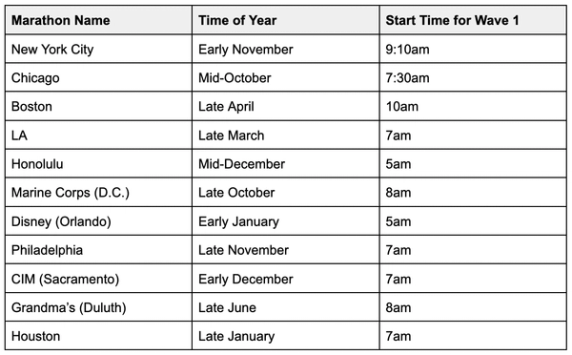
I used weather data from 2005 to 2024 and looked at the temperature, dew point, wind speed, and precipitation at the start time and start time plus four hours for each marathon. In the rest of this article, I’ll identify the best (and worst) marathons on these weather metrics.
* I used the Wave 1 start times for all marathons.
* Many of these races were not held or changed dates due to the Coronavirus pandemic in 2020 and 2021. However, I included weather when the marathons would have occurred during those years in the averages, minimums, and maximums.
If you hate humidity…
The Philadelphia Marathon has the lowest average dew point across all 11 marathons. According to the National Weather Service, dew points less than or equal to 55°F are comfortable, dew points between 55°F and 65°F are muggy, and dew points over 65°F are extremely muggy and uncomfortable. Philadelphia’s maximum dew point on race day is only 46°F, making it consistently comfortable.
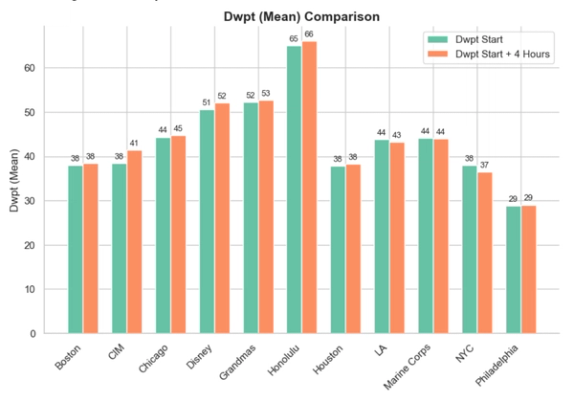
* Using dew point rather than relative humidity: According to the National Weather Service, relative humidity can be misleading since the same relative humidity can feel drastically different at varying temperatures. For example, “a temperature of 30 and a dew point of 30 will give you a relative humidity of 100%, but a temperature of 80 and a dew point of 60 produces a relative humidity of 50%. It would feel much more ‘humid’ on the 80 degree day with 50% relative humidity than on the 30 degree day with 100% relative humidity. This is because of the higher dew point.”
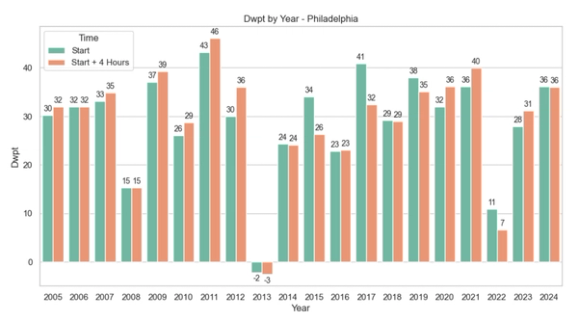
Regularly high dew points make the Honolulu Marathon a bad choice for someone who hates humidity. Honolulu has an average dew point of 65°F at the start of the race, and in the past twenty years has never had a start time dew point of less than 59°F.
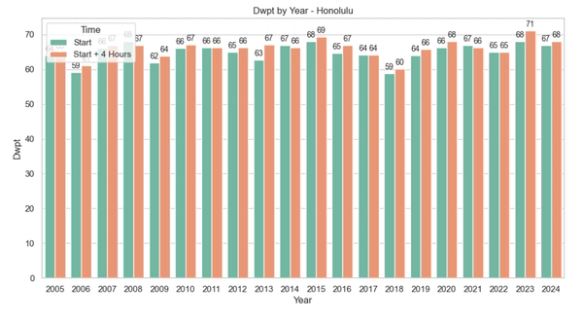
If you hate rain/snow…
It has never rained at the Disney Marathon, making it a great choice if you want to avoid running in the rain. While none of the marathons had very high rates of precipitation, the Boston Marathon and the Marine Corps Marathon lead the group with rain five out of the past twenty years for Boston and four out of the past twenty years for Marine Corps.
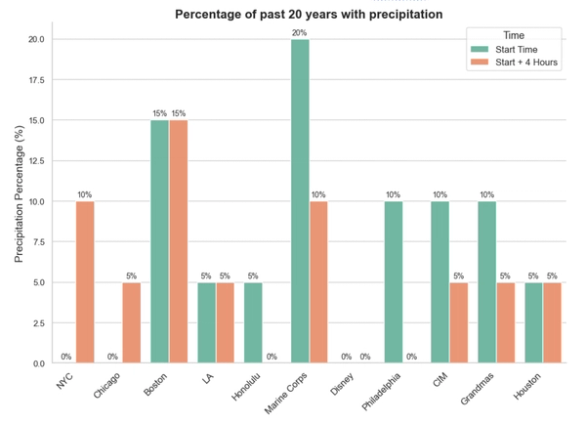
* Boston had precipitation two years at start time (2007, 2019), two years at start time plus four hours (2015, 2023), and one year at both timepoints (2018).
If you hate the heat…
The California International Marathon, Philadelphia Marathon, and Houston Marathon all have average starting temperatures in the 40s. However, Philadelphia stays the coolest throughout the entire race, with an average temperature of 47°F four hours after start time.
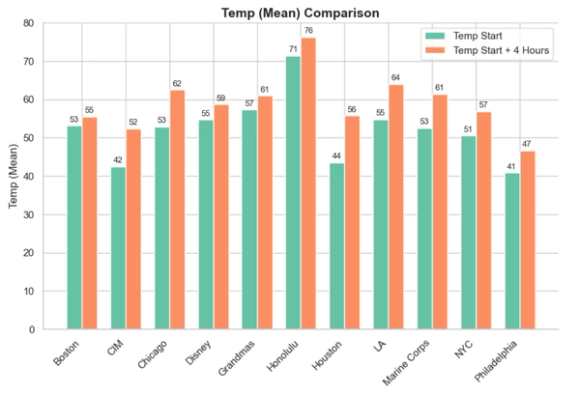
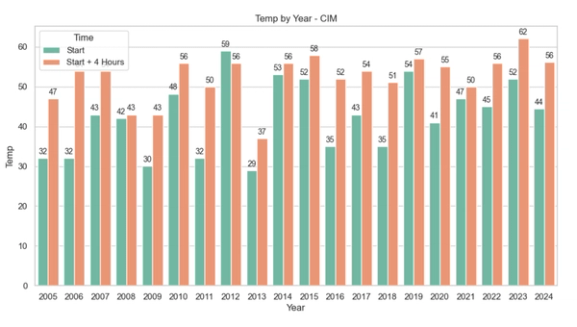
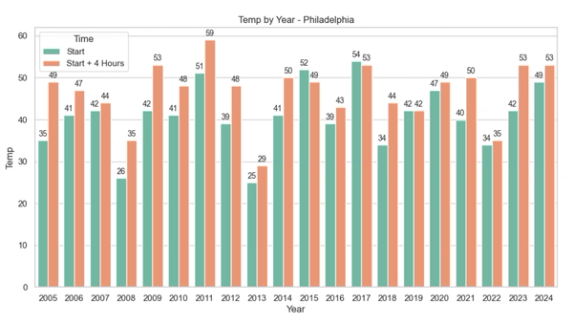
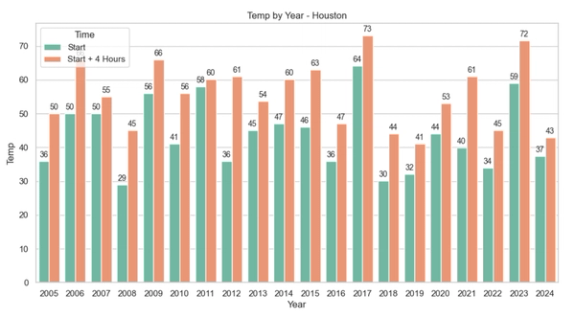
Looking at maximum historical temperatures, California International Marathon and Philadelphia Marathon stand out as the top choices for cold weather lovers. Neither marathon has been above 60°F at the start in the past twenty years.
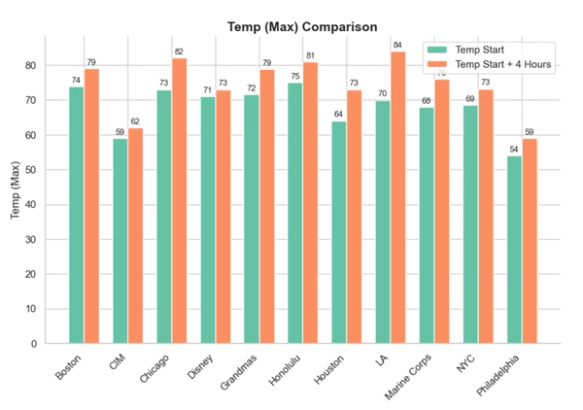
If you hate the cold…If you want to avoid shivering on the start line at all costs, New York City, Los Angeles, or Grandma’s could be the race for you. All three have start line temperatures consistently above 40° without typically being too hot throughout race day (NYC average temperature four hours after start time: 57°; LA: 64°; Grandma’s: 61°.)
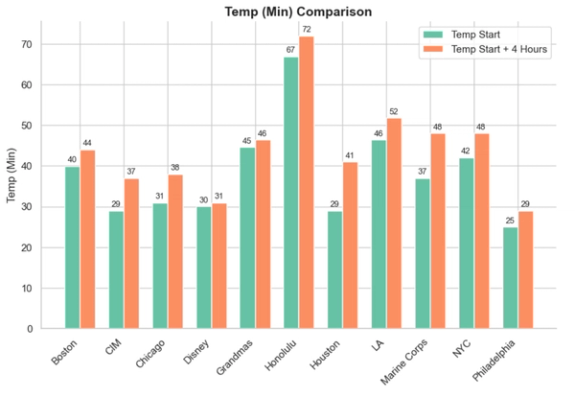
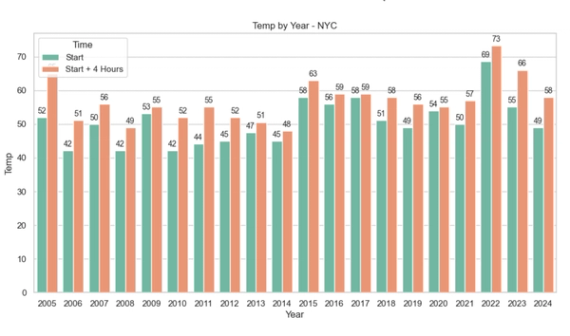
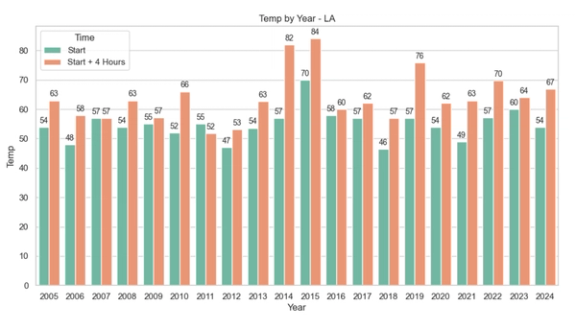
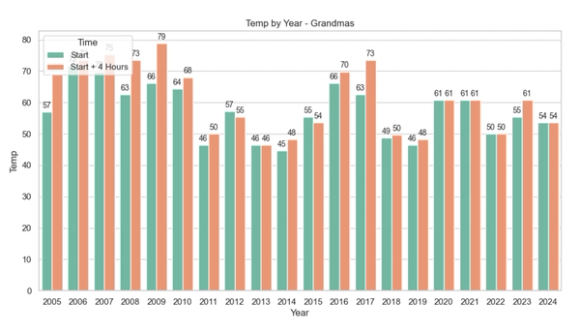
If you hate the wind…
The Los Angeles Marathon and California International Marathon boast the lowest wind speeds out of the group, with averages of two and four miles per hour at the start, respectively.
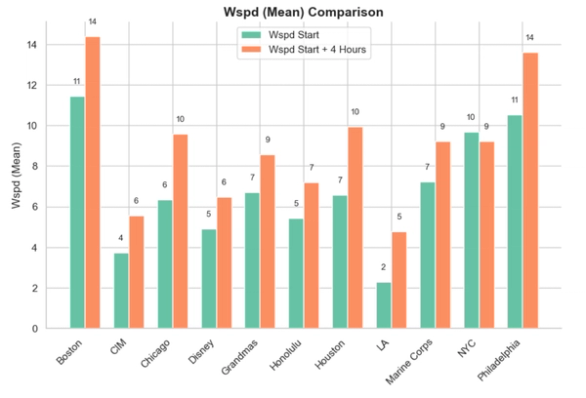
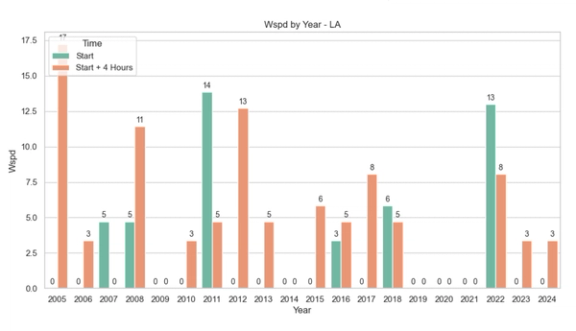
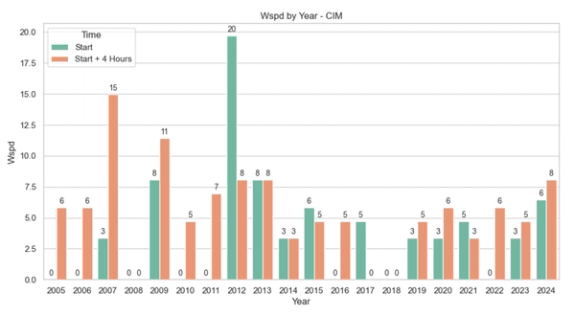
If wind is your marathon nightmare, you might want to avoid Boston and Philadelphia. Not only do these two marathons have the highest average wind speeds in the group, but they are also the only two marathons that always have at least some wind.
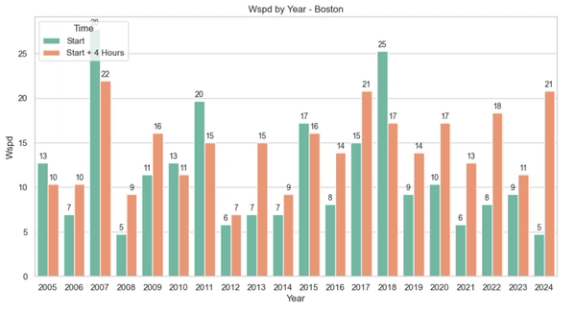
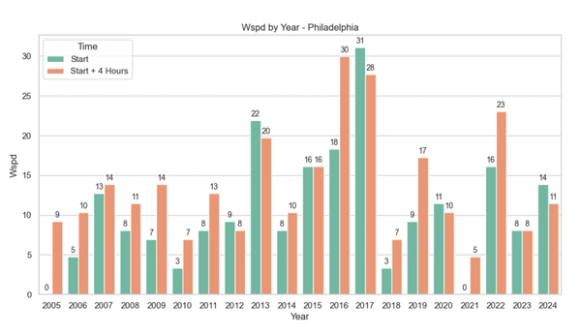
If you want to know what to expect…
If your biggest marathon weather preference is to know what’s coming, check out the Honolulu Marathon. Honolulu has the smallest standard deviation in temperature, meaning its weather is consistent and predictable. The warmest and coldest years at Honolulu only differed by 8°F for start time temperature (minimum: 67°F, maximum: 75°F) and 9°F for start time plus four hours temperature (minimum: 72°F, maximum: 81°F).
* Standard deviation is a measure of how spread out the values in a dataset are from the mean (average). A low standard deviation means the values are close to the mean, while a high standard deviation means the values are more spread out.
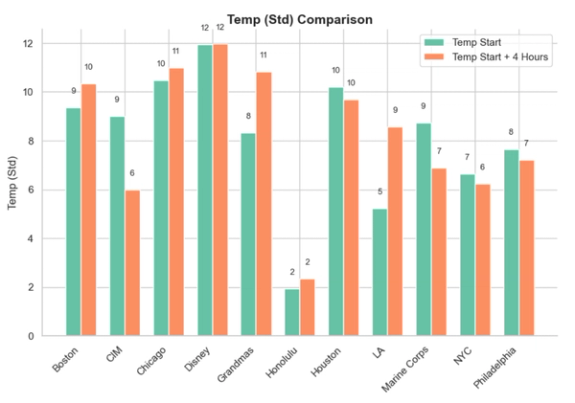
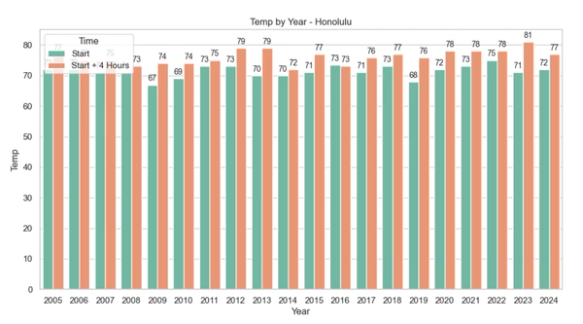
Alternatively, Chicago and Disney have the highest standard deviations in temperature, so they are the most unpredictable of the group. The warmest and coldest days in Chicago differed by 42°F for start time temperature (minimum: 31°F, maximum: 73°F) and 44°F for start time plus four hours temperature (minimum: 38°F, maximum: 82°F). For Disney, the warmest and coldest days differed by 41°F for start time temperature (minimum: 30°F, maximum: 71°F) and 42°F for start time plus for hours temperature (minimum: 31°F, maximum: 73°F).
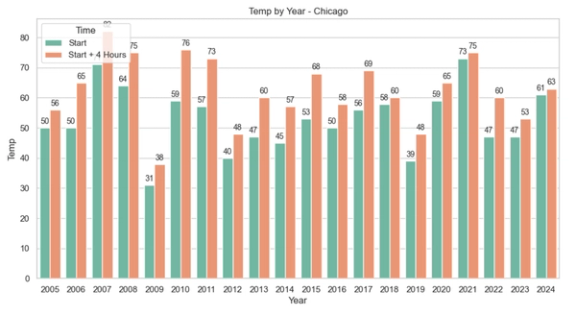
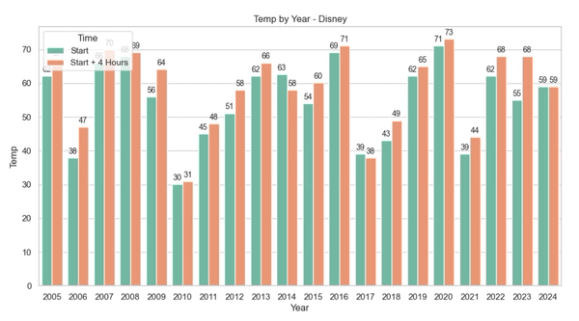
I can’t promise that knowing this information will protect you from the urge to check the weather app every five minutes during the week of your marathon, but maybe it can help you make the difficult decision of which marathon to run next. Most importantly, remember to trust in your training and have confidence you can run well no matter the conditions!
___________________
Keep up with all things track and field by following us across Instagram, X, Bluesky, Threads, and YouTube. Catch the latest episodes of the CITIUS MAG Podcast on Spotify and Apple Podcasts. For more, subscribe to The Lap Count and CITIUS MAG Newsletter for the top running news delivered straight to your inbox.

Rachel DaDamio
Rachel DaDamio ran at the University of Notre Dame and moved to Chicago after graduating to work as a data scientist, where she’s also training for a fall marathon.
